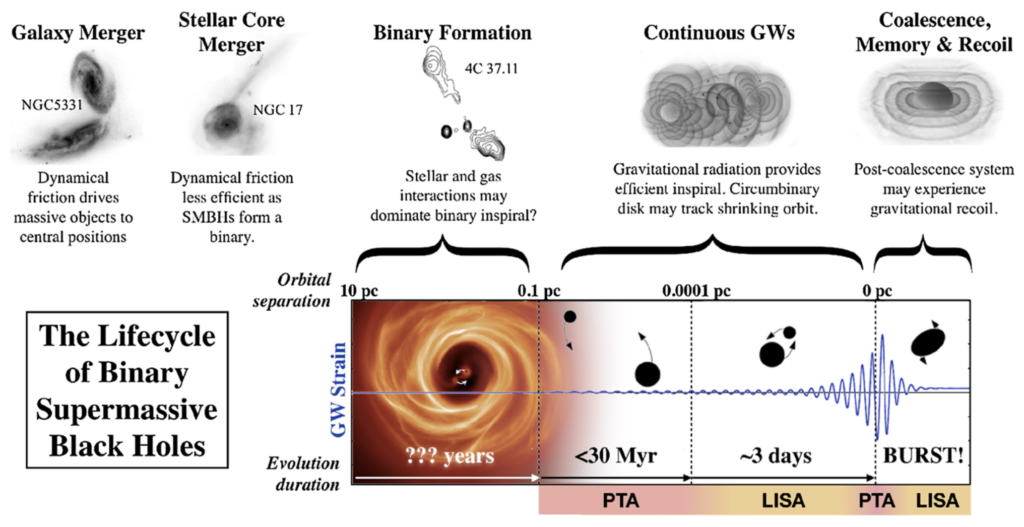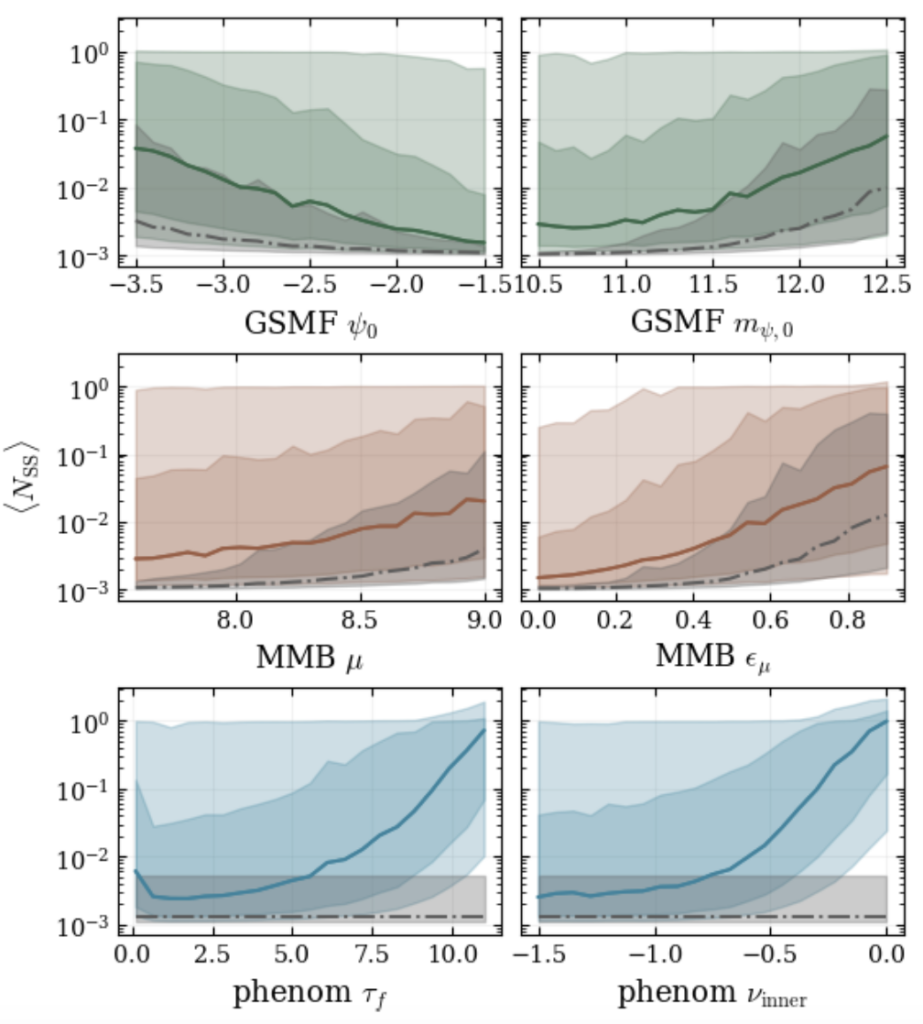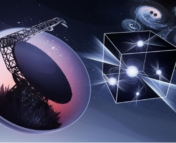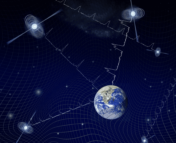Authors: Emiko C. Gardiner, Luke Zoltan Kelley, Anna-Malin Lemke, and Andrea Mitridate
First author institution: Department of Astronomy, University of California, Berkeley 501 Campbell Hall #3411, Berkeley, CA
Status: Preprint on arXiv
The recent announcement on the strong evidence for a nanohertz-frequency gravitational wave background by various pulsar timing arrays (PTAs) caught significant attention from the astrophysics and cosmology communities. A ‘background’ of gravitational waves is the unresolved confusion noise of many gravitational waves coming from all directions, which a detector cannot attribute to any one source or location. It could be caused by a population of supermassive black hole binaries (SMBHBs) at the centers of merged galaxies from across the universe, which emit gravitational waves and consequently spiral inwards. Those gravitational waves would overlap with each other, like sound waves in a cafe, creating a background ‘hum’ of voices from across the universe.
The frequency of gravitational waves from a single SMBHB encodes information on its characteristics, such as its distance from us, the separation between the binaries, and the masses of the binary. The pinnacle of multimessenger astronomy would be to detect a single SMBHB using gravitational waves and to pinpoint its sky location so we could also observe it electromagnetically (i.e. with light). But, we would have to resolve the gravitational waves from a single SMBHB from the gravitational wave background. These gravitational waves, which we call continuous waves (CW), would have to be particularly strong against the background of gravitational waves from thousands of SMBHB.

Theoretically, this could be possible. A relatively close SMBHB could be resolvable in the same way that you could resolve the conversation from a neighbouring table in a busy restaurant. They are closer and appear ‘louder’ in your detector. Additionally, we’d expect more detectable CW sources at higher frequencies because there are less SMBHBs emitting gravitational waves at higher frequencies, resulting in a weaker background. This increases the probability of detecting a single CW source against a weaker background in this frequency range.
The question is, what characteristics of an SMBHB and its host galaxy are required to detect its CWs? To investigate this question, the authors use semi-analytical models to model galaxy evolution. They assign an SMBHB to each merged galaxy and measure the expected gravitational waves they would emit and the expected gravitational wave background. The characteristics of the SMBHB are related to the characteristics of their host galaxy in the following ways:
- A galaxy stellar mass function (GSMF) gives a number density of galaxies as a function of stellar mass in the galaxy. In short, if you bin your galaxies according to their masses, which function would best describe this binned distribution? From this distribution, we can assign masses to our simulated galaxies. It is characterised by two parameters: a normalisation constant
that sets the overall scale for the function, and a characteristic mass
which determines the distribution’s peak.
- The black hole mass-bulge mass relation (a.k.a. MBH-Mbulge). There is a strong dependence between the mass of the SMBHB and the mass of the bulge of its host galaxy, so if you know the mass of your galaxy (bulge), you can determine the mass of the SMBHB. It is parameterised by a normalisation scaling
and a variance
, which determines the amount of scatter away the relation.
- A phenomenological model that determines how fast an SMBHB inspirals and merges because of gravitational wave emission. It is parameterised by
, the timescale for the SMBHB merger, and
, a spectral index to describe how quickly a binary inspirals. A higher index means a faster inspiral.

The authors investigate how changing these parameters changes the expected number of continuous waves detected compared to the gravitational wave background in Figure 2. In the top left window, we see that increasing the GSMF normalisation
decreases the expected number of detected CW. This is because by increasing the normalisation for all galaxies, we get more massive galaxies and more massive SMBHBs, and so we increase the ‘volume’ of the background, making it harder for a particular CW to be ‘heard’ over the background. In contrast, increasing the characteristic mass
increases the expected number of CW detections, likely because more SMBHBs are allowed to be more massive, increasing the probability of a high-mass SMBHB generating CWs above the background. For a similar reason, increasing the MBH-Mbulge parameters increases the expected number of CW detections (middle panels).
Meanwhile, we see that more CW detections are expected to be detected as the timescale for an SMBHB merger increases. This is because if the timescale to merge was long, there would be more CW sources closer to us, therefore we should observe more CWs. Also, there would be more SMBHB emitting gravitational waves at frequencies below the PTA detection range, decreasing the background, and making CWs easier to detect. However, we don’t expect this in our universe – this result would suggest that if we’ve detected a background, we should have detected a CW source already! Finally, as the phenomenological spectral index
increases, the expected number of CW increases. This is because a greater value of
means the SMBHB evolves faster, resulting in more CW in the higher frequency spectrum where the background is weaker.
So even before we have detected CWs, we have learnt a little bit about what properties we’d expect of the SMBHBs that are emitting them. Further data gathering and analyses are required before we can announce a CW detection. The search continues…
Edited by Benjamin Cassese
Featured image credits: Olena Shmahalo/NANOGrav




